Amritsar Sightseeing
About Amritsar
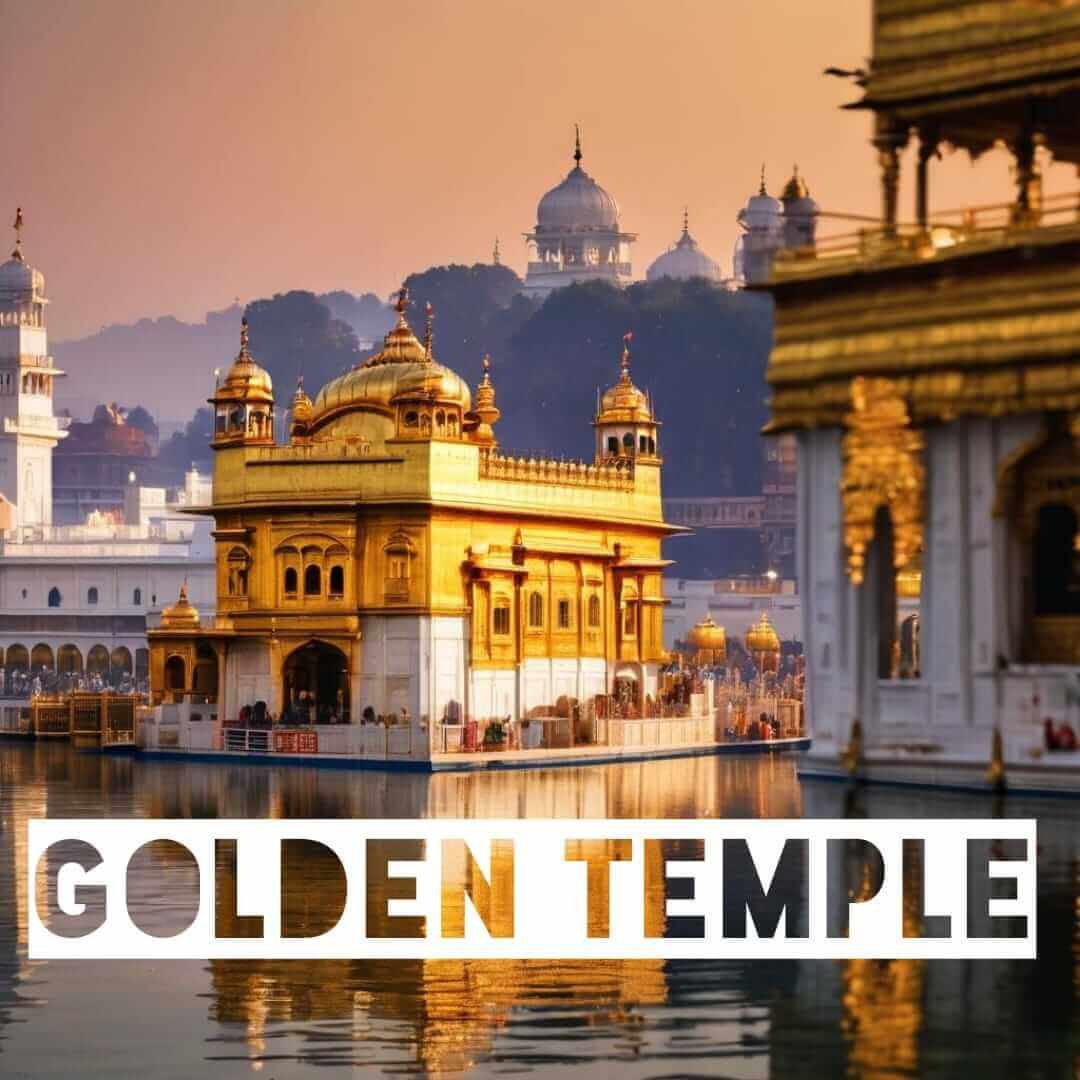 Amritsar, popularly known as Ambarsar, is a city that intertwines history, legend, and spirituality. Although officially established in the 16th century by Guru Ram Das, the fourth Sikh guru, it has deep-rooted connections to the Ramayana. Amritsar is believed to be the place where Maharishi Valmiki’s ashram stood, where Sita gave birth to her twins, Lav and Kush. The city is a significant center of Sikhism, home to the iconic Golden Temple, the holiest Sikh shrine, and Jallianwala Bagh, which reflects its role in India’s freedom struggle. Amritsar is a vibrant destination with captivating legends, religious landmarks, historical monuments, bustling markets, colorful festivals, and delectable cuisine. It attracts travelers of all backgrounds. It welcomes travelers of all backgrounds, and its key attractions include the Golden Temple, Akal Takht and Jallianwala Bagh. Amritsar’s south, where you’ll find historical structures like the Golden Temple, contrasts with the modern, prosperous north, featuring upmarket restaurants and hotels. Exploring Amritsar is like uncovering a treasure trove of experiences, from the divine serenity of the Golden Temple to experiencing the passion and enthusiasm of the daily Wagah Border Ceremony, a breathtaking event that signifies the closure of the India-Pakistan border and presents a remarkable exhibition of patriotism and military precision, sumptuous Punjabi cuisine.
Amritsar, popularly known as Ambarsar, is a city that intertwines history, legend, and spirituality. Although officially established in the 16th century by Guru Ram Das, the fourth Sikh guru, it has deep-rooted connections to the Ramayana. Amritsar is believed to be the place where Maharishi Valmiki’s ashram stood, where Sita gave birth to her twins, Lav and Kush. The city is a significant center of Sikhism, home to the iconic Golden Temple, the holiest Sikh shrine, and Jallianwala Bagh, which reflects its role in India’s freedom struggle. Amritsar is a vibrant destination with captivating legends, religious landmarks, historical monuments, bustling markets, colorful festivals, and delectable cuisine. It attracts travelers of all backgrounds. It welcomes travelers of all backgrounds, and its key attractions include the Golden Temple, Akal Takht and Jallianwala Bagh. Amritsar’s south, where you’ll find historical structures like the Golden Temple, contrasts with the modern, prosperous north, featuring upmarket restaurants and hotels. Exploring Amritsar is like uncovering a treasure trove of experiences, from the divine serenity of the Golden Temple to experiencing the passion and enthusiasm of the daily Wagah Border Ceremony, a breathtaking event that signifies the closure of the India-Pakistan border and presents a remarkable exhibition of patriotism and military precision, sumptuous Punjabi cuisine.
Amritsar Sightseeing
1. Golden Temple
The Golden Temple, also known as Sri Harmandir Sahib or Darbar Sahib, is the jewel of Amritsar and a paramount pilgrimage site for people of all backgrounds. With its captivating golden dome, this 16th-century shrine is a harmonious blend of Hindu and Islamic architectural styles, adorned with semi-precious stones and exquisite craftsmanship. Maharaja Ranjit Singh embellished the upper half of the temple with around 400 kg of gold leaf, resulting in a truly awe-inspiring spectacle. The tranquil Amrit Sarovar, a sacred pool, envelops the temple, creating an aura of serenity. Housing the revered Guru Granth Sahib during the day and transporting it to the Akal Takht at night, where the ancient weapons of Sikh warriors are displayed, a tradition established by Guru Hargobind, the temple’s spiritual significance is profound. The hallmark of the shrine is the Langar, a free community kitchen serving a vegetarian meal to over 100,000 people from all walks of life., reinforcing the values of equality and humility. Covering one’s head upon entry is customary, and the Golden Temple embodies a sense of eternal peace and spiritual bliss, standing as a testament to the rich history and devotion of Sikhism.
2. Jallianwala Bagh
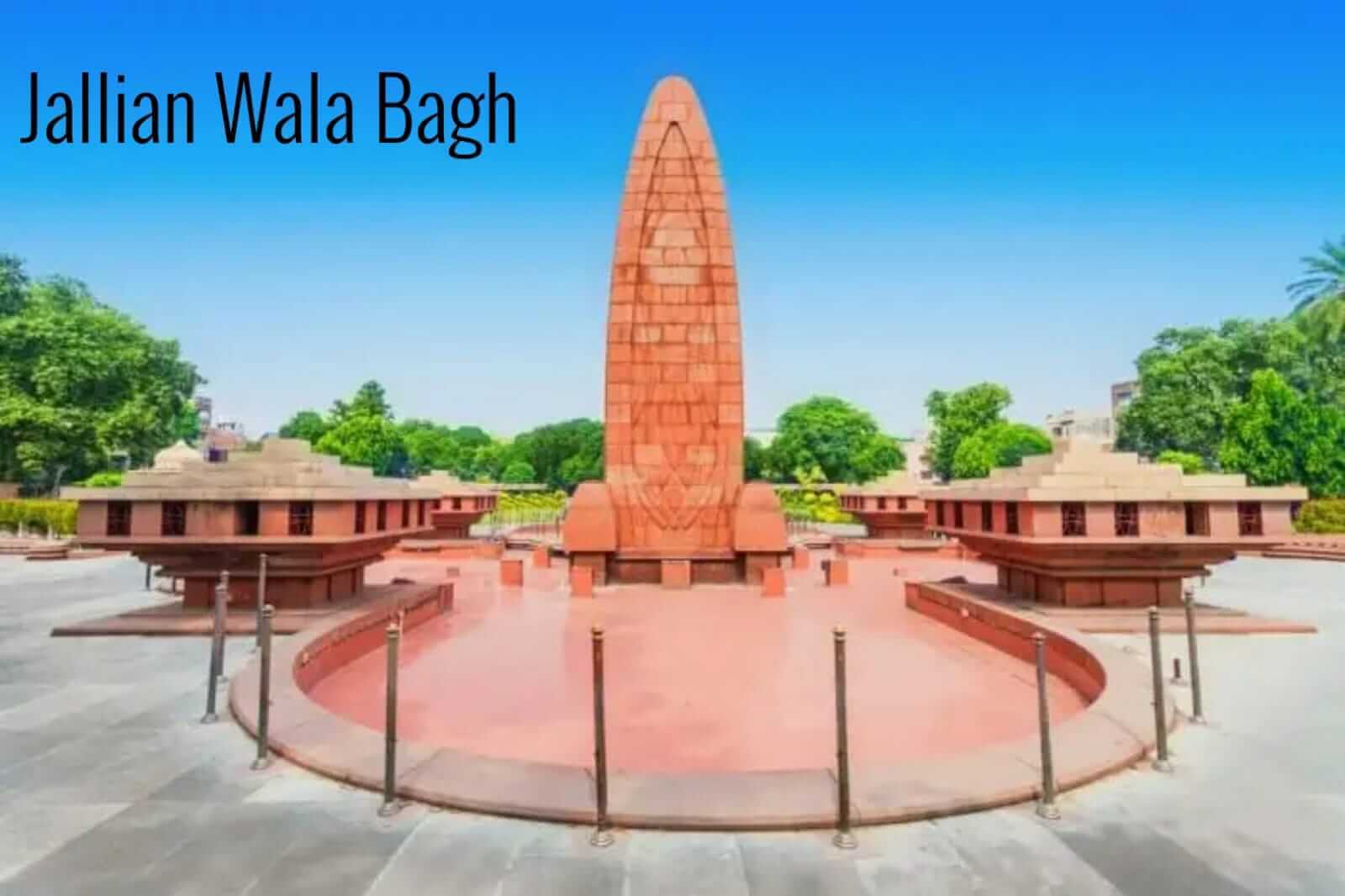 Nestled behind the resplendent Golden Temple, Amritsar’s Jallianwala Bagh stands as a poignant memorial to the haunting atrocity that unfolded within its 6.5-acre expanse in 1919. This solemn public garden tells the harrowing tale of the British Army’s ruthless massacre of unarmed Indian men, women, and children who had gathered here to peacefully protest and demand the release of incarcerated leaders of the Indian Independence Movement. The garden’s massive stone memorial serves as a stark reminder of the darkest day in India’s struggle for freedom. The lasting imprints of that tragic event are etched in the bullet marks that scar a portion of the garden’s walls and the well, a chilling reminder of the desperate attempts made by many to evade the relentless hail of bullets. Jallianwala Bagh is an essential visit, allowing one to reflect on this gloomy chapter in India’s quest for independence, pay respects to the martyrs, and witness the poignant light and sound show in the evening that recreates the horrifying incident, ensuring that the memory of this solemn ground remains etched in history with profound respect and dignity.
Nestled behind the resplendent Golden Temple, Amritsar’s Jallianwala Bagh stands as a poignant memorial to the haunting atrocity that unfolded within its 6.5-acre expanse in 1919. This solemn public garden tells the harrowing tale of the British Army’s ruthless massacre of unarmed Indian men, women, and children who had gathered here to peacefully protest and demand the release of incarcerated leaders of the Indian Independence Movement. The garden’s massive stone memorial serves as a stark reminder of the darkest day in India’s struggle for freedom. The lasting imprints of that tragic event are etched in the bullet marks that scar a portion of the garden’s walls and the well, a chilling reminder of the desperate attempts made by many to evade the relentless hail of bullets. Jallianwala Bagh is an essential visit, allowing one to reflect on this gloomy chapter in India’s quest for independence, pay respects to the martyrs, and witness the poignant light and sound show in the evening that recreates the horrifying incident, ensuring that the memory of this solemn ground remains etched in history with profound respect and dignity.
3. Partition Museum
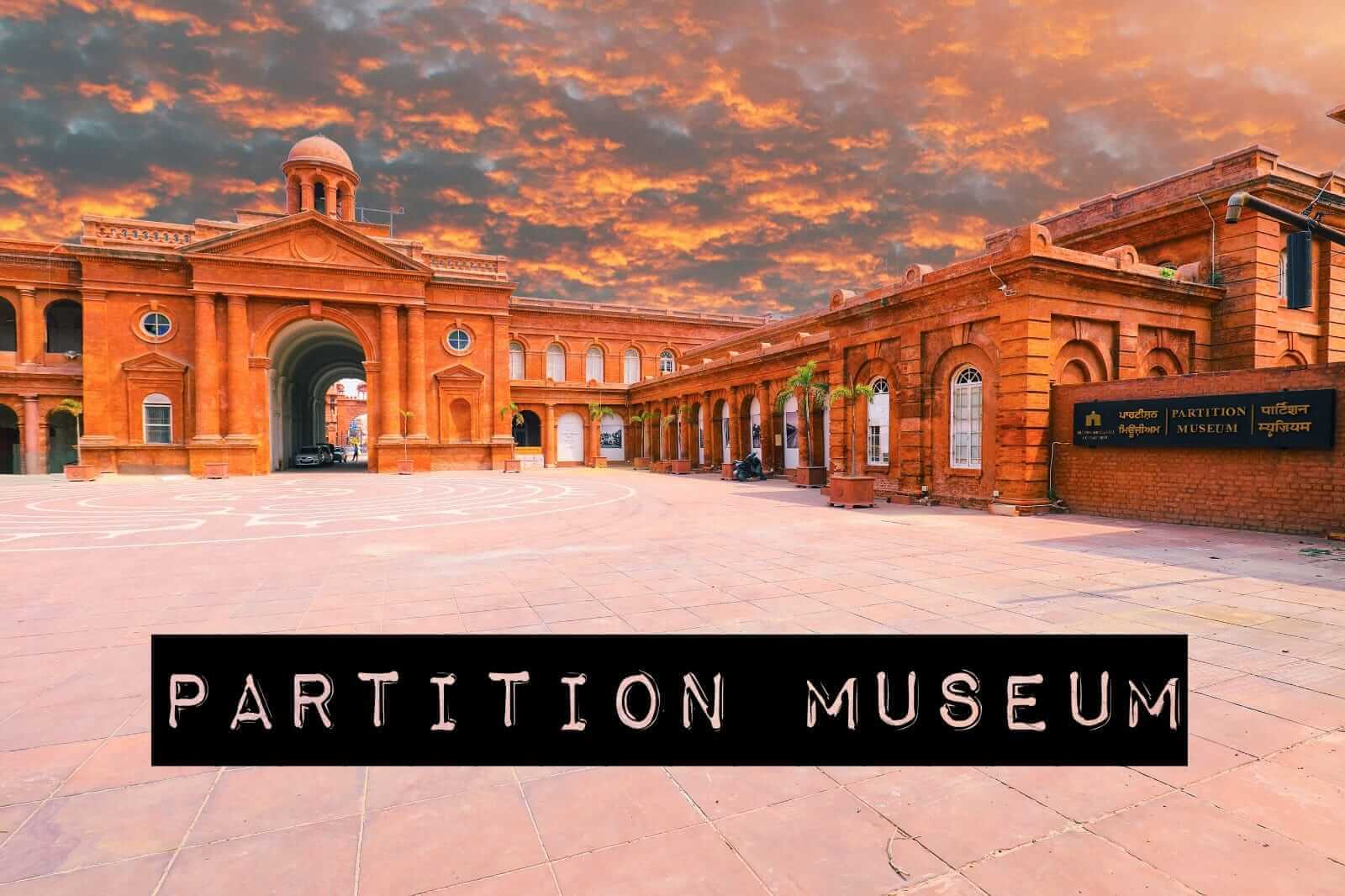 The year 1947 marked an important episode in India’s history, signifying its independence from British rule and the subsequent partition into India and Pakistan, known as the Partition of India. In Amritsar, tourists can delve into the depths of this significant historical event at the Partition Museum, a unique institution solely dedicated to the Partition. This museum houses a soul-stirring collection of newspaper clippings, vintage photographs, and oral accounts from individuals who lived through the chaotic period leading up to the partition and the challenging resettlement of refugees afterward. A visit to this museum provides profound insights into the origins of the rivalry between India and Pakistan. As you exit the museum, take a moment to inscribe a message on a green leaf and hang it on the Tree of Hope, contributing to the solemn legacy of this museum. The Partition Museum, established with the assistance of the Arts and Cultural Heritage Trust of the United Kingdom, serves as an emotional reminder of the individuals affected by the India-Pakistan partition, holding their memories and stories in deep reverence. Located in the heart of Amritsar, it plays a vital role in preserving the history of the partition, offering a place to reflect on the past and pay homage to those who lived through this historic event.
The year 1947 marked an important episode in India’s history, signifying its independence from British rule and the subsequent partition into India and Pakistan, known as the Partition of India. In Amritsar, tourists can delve into the depths of this significant historical event at the Partition Museum, a unique institution solely dedicated to the Partition. This museum houses a soul-stirring collection of newspaper clippings, vintage photographs, and oral accounts from individuals who lived through the chaotic period leading up to the partition and the challenging resettlement of refugees afterward. A visit to this museum provides profound insights into the origins of the rivalry between India and Pakistan. As you exit the museum, take a moment to inscribe a message on a green leaf and hang it on the Tree of Hope, contributing to the solemn legacy of this museum. The Partition Museum, established with the assistance of the Arts and Cultural Heritage Trust of the United Kingdom, serves as an emotional reminder of the individuals affected by the India-Pakistan partition, holding their memories and stories in deep reverence. Located in the heart of Amritsar, it plays a vital role in preserving the history of the partition, offering a place to reflect on the past and pay homage to those who lived through this historic event.
4. Wagah Border Ceremony
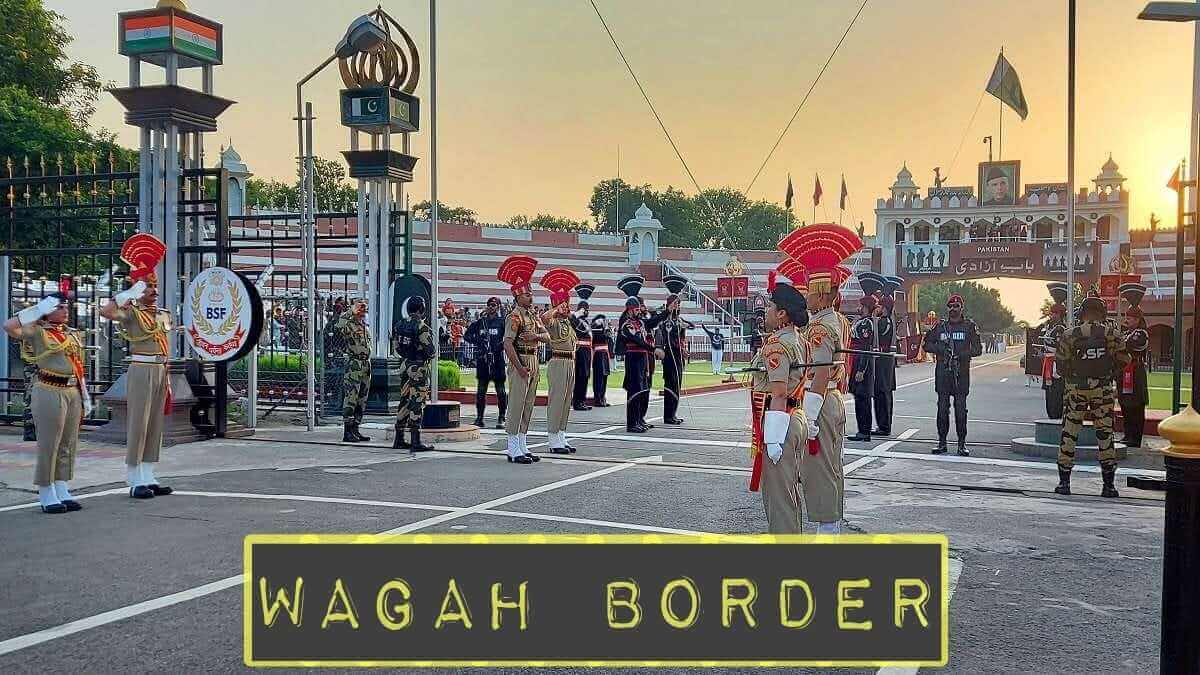 A 31-kilometer drive to the west of Amritsar’s city center will lead you to the Wagah Border, which signifies the final stretch of Indian territory before Pakistan. Here, you can witness the impressive Beating Retreat Ceremony, a daily border-closing event held at sunset. The ceremony showcases grand displays by the Indian Border Security Force and the Pakistan Rangers as they salute each other, lower and fold their flags, and close the border gates. For tourists, it’s a chance to observe the striking disparities between Pakistan and India. On the Pakistani side, the ambiance is more restrained, with separate seating for men and women. In contrast, the Indian side is filled with patriotic enthusiasm, featuring Bollywood music, vibrant street dances, and the waving of Indian flags. Although the ceremony only lasts about 45 minutes, the indelible memories it creates will undoubtedly provide ample material for captivating stories when you return home.
A 31-kilometer drive to the west of Amritsar’s city center will lead you to the Wagah Border, which signifies the final stretch of Indian territory before Pakistan. Here, you can witness the impressive Beating Retreat Ceremony, a daily border-closing event held at sunset. The ceremony showcases grand displays by the Indian Border Security Force and the Pakistan Rangers as they salute each other, lower and fold their flags, and close the border gates. For tourists, it’s a chance to observe the striking disparities between Pakistan and India. On the Pakistani side, the ambiance is more restrained, with separate seating for men and women. In contrast, the Indian side is filled with patriotic enthusiasm, featuring Bollywood music, vibrant street dances, and the waving of Indian flags. Although the ceremony only lasts about 45 minutes, the indelible memories it creates will undoubtedly provide ample material for captivating stories when you return home.
5. Shri Durgiana Mandir
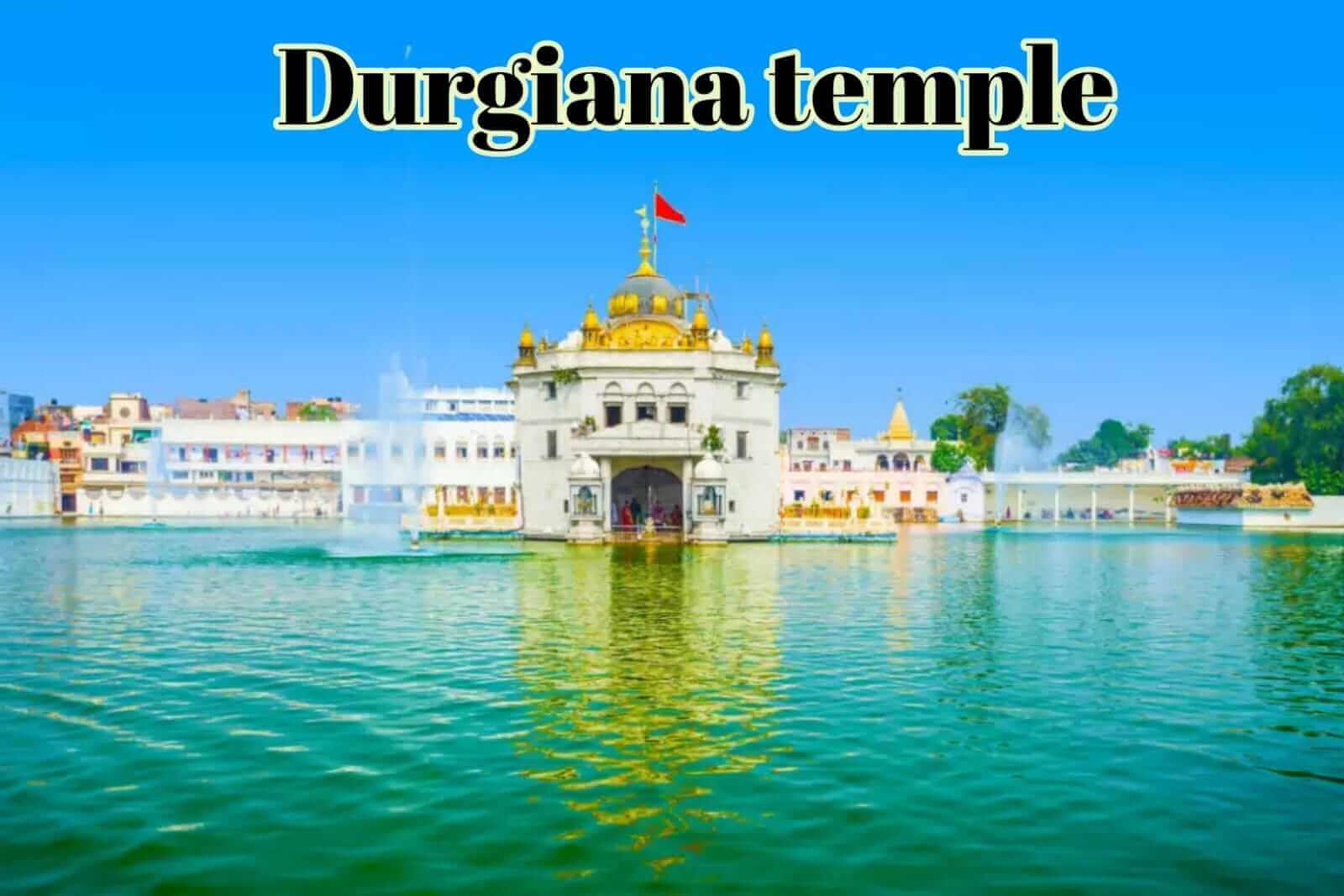 Durgiana Temple, also known as the Lakshmi Narayan Temple or Sitla Mandir, is a respected Hindu temple situated in the heart of Amritsar. This magnificent temple, often referred to as the “Silver Temple,” bears a striking architectural resemblance to the nearby Golden Temple, although it is dedicated to different deities. Within its sacred Surroundings, you’ll find idols of Goddess Durga, Goddess Lakshmi, and Lord Vishnu. The temple is especially vibrant during festivals like Dussehra, Janmashtami, and Diwali. The temple courtyard is believed to be a resting place of Lord Hanuman during his journey to the Himalayas. Its distinctive silver doors, adorned with depictions of holy figures, contribute to its Silver Temple name, offering a unique spiritual experience in Amritsar.
Durgiana Temple, also known as the Lakshmi Narayan Temple or Sitla Mandir, is a respected Hindu temple situated in the heart of Amritsar. This magnificent temple, often referred to as the “Silver Temple,” bears a striking architectural resemblance to the nearby Golden Temple, although it is dedicated to different deities. Within its sacred Surroundings, you’ll find idols of Goddess Durga, Goddess Lakshmi, and Lord Vishnu. The temple is especially vibrant during festivals like Dussehra, Janmashtami, and Diwali. The temple courtyard is believed to be a resting place of Lord Hanuman during his journey to the Himalayas. Its distinctive silver doors, adorned with depictions of holy figures, contribute to its Silver Temple name, offering a unique spiritual experience in Amritsar.
6. Mandir Mata Lal Devi
Mata Lal Devi Temple, often referred to as the Sheesh Mahal of Amritsar, is a unique and sacred Hindu temple dedicated to the 20th-century female saint, Mata Lal Devi. This temple is renowned for its extraordinary interior, featuring colorful mirrored hallways, ankle-deep waterways, twisted passageways, tunnels, and even a cave. Unlike conventional temples, Mata Lal Devi Temple is home to a multitude of Hindu deities and features an array of grottoes and shrines. It is believed that the temple holds miraculous powers, and women who pray here for children are said to have their wishes granted. Exploring the temple can be a truly intriguing experience, with its complex and winding layout that might leave visitors both bewildered and captivated. As you navigate through dim, narrow passages, you’ll find yourself in rooms adorned with vibrant mirrored mosaics. In an adventurous twist, you’ll even have the opportunity to crawl through a water-filled cave, all in your journey to reach the sacred shrine of Lal Devi, making it a must-visit destination for those seeking an extraordinary and enlightening experience in Amritsar.
7. Baba Atal Tower
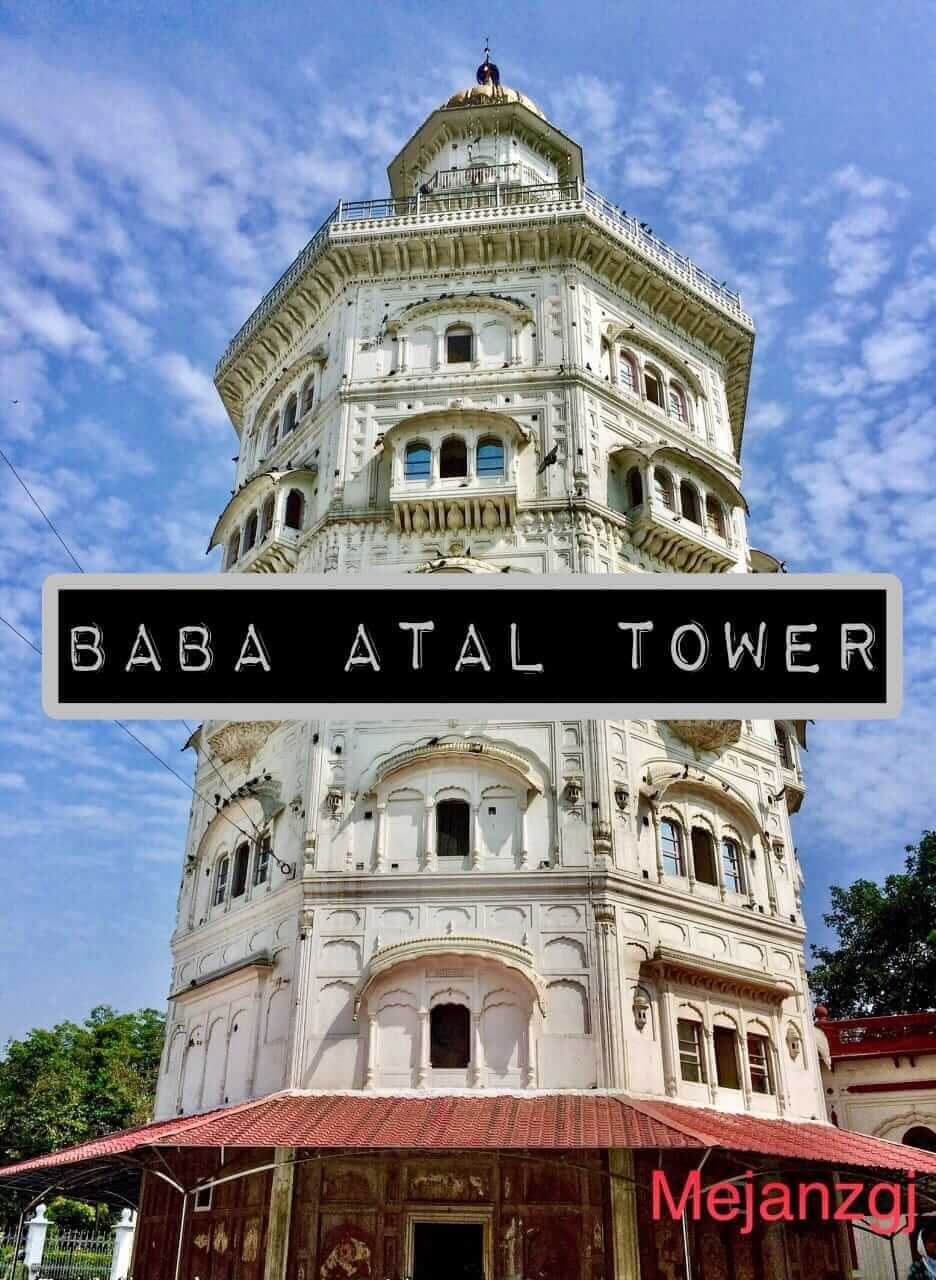 Just a brief stroll from the Golden Temple in Amritsar, you’ll discover Gurudwara Baba Atal Rai, an architectural gem that often goes unnoticed amidst the grandeur of its adjacent neighbor. This unique structure stands as a tribute to the memory of Baba Atal Rai, the son of the sixth Sikh guru, Guru Hargobind. This nine-storied octagonal tower, constructed around two centuries ago, is a towering wonder that reaches a height of 40 meters, making it one of the tallest structures in Amritsar. Legend has it that Baba Atal Rai performed an extraordinary deed by bringing the deceased back to life, only to make amends for what he believed was a sin of meddling against the divine order by ultimately sacrificing his own life.. Ascend to the pinnacle of the tower, and you’ll be rewarded with breathtaking views of Amritsar, offering some of the most spectacular sightseeing opportunities in the city.
Just a brief stroll from the Golden Temple in Amritsar, you’ll discover Gurudwara Baba Atal Rai, an architectural gem that often goes unnoticed amidst the grandeur of its adjacent neighbor. This unique structure stands as a tribute to the memory of Baba Atal Rai, the son of the sixth Sikh guru, Guru Hargobind. This nine-storied octagonal tower, constructed around two centuries ago, is a towering wonder that reaches a height of 40 meters, making it one of the tallest structures in Amritsar. Legend has it that Baba Atal Rai performed an extraordinary deed by bringing the deceased back to life, only to make amends for what he believed was a sin of meddling against the divine order by ultimately sacrificing his own life.. Ascend to the pinnacle of the tower, and you’ll be rewarded with breathtaking views of Amritsar, offering some of the most spectacular sightseeing opportunities in the city.
8. Gobindgarh Fort
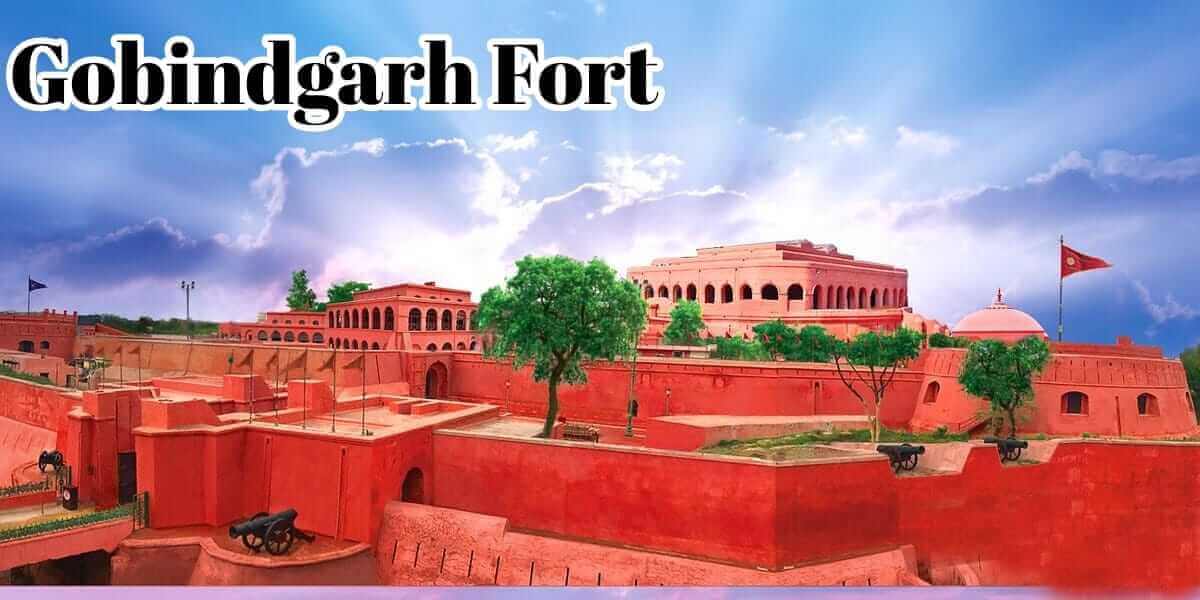 Gobindgarh Fort, over 250 years old, is a historic symbol of Punjab. Back in the day, it was a vital defense post with around 12,000 soldiers safeguarding Amritsar. Nowadays, it has become an educational destination where you can explore Amritsar’s history and culture. The fort has four museums that exhibit rare weapons, traditional headgear, Sikh art, and more. Don’t miss the captivating light and sound shows held in the evenings. This transformed fort is a window to Amritsar’s rich heritage, open to the public since 2017. It’s a place where history comes alive, suitable for all visitors.
Gobindgarh Fort, over 250 years old, is a historic symbol of Punjab. Back in the day, it was a vital defense post with around 12,000 soldiers safeguarding Amritsar. Nowadays, it has become an educational destination where you can explore Amritsar’s history and culture. The fort has four museums that exhibit rare weapons, traditional headgear, Sikh art, and more. Don’t miss the captivating light and sound shows held in the evenings. This transformed fort is a window to Amritsar’s rich heritage, open to the public since 2017. It’s a place where history comes alive, suitable for all visitors.
9. Sri Ram Tirath Temple
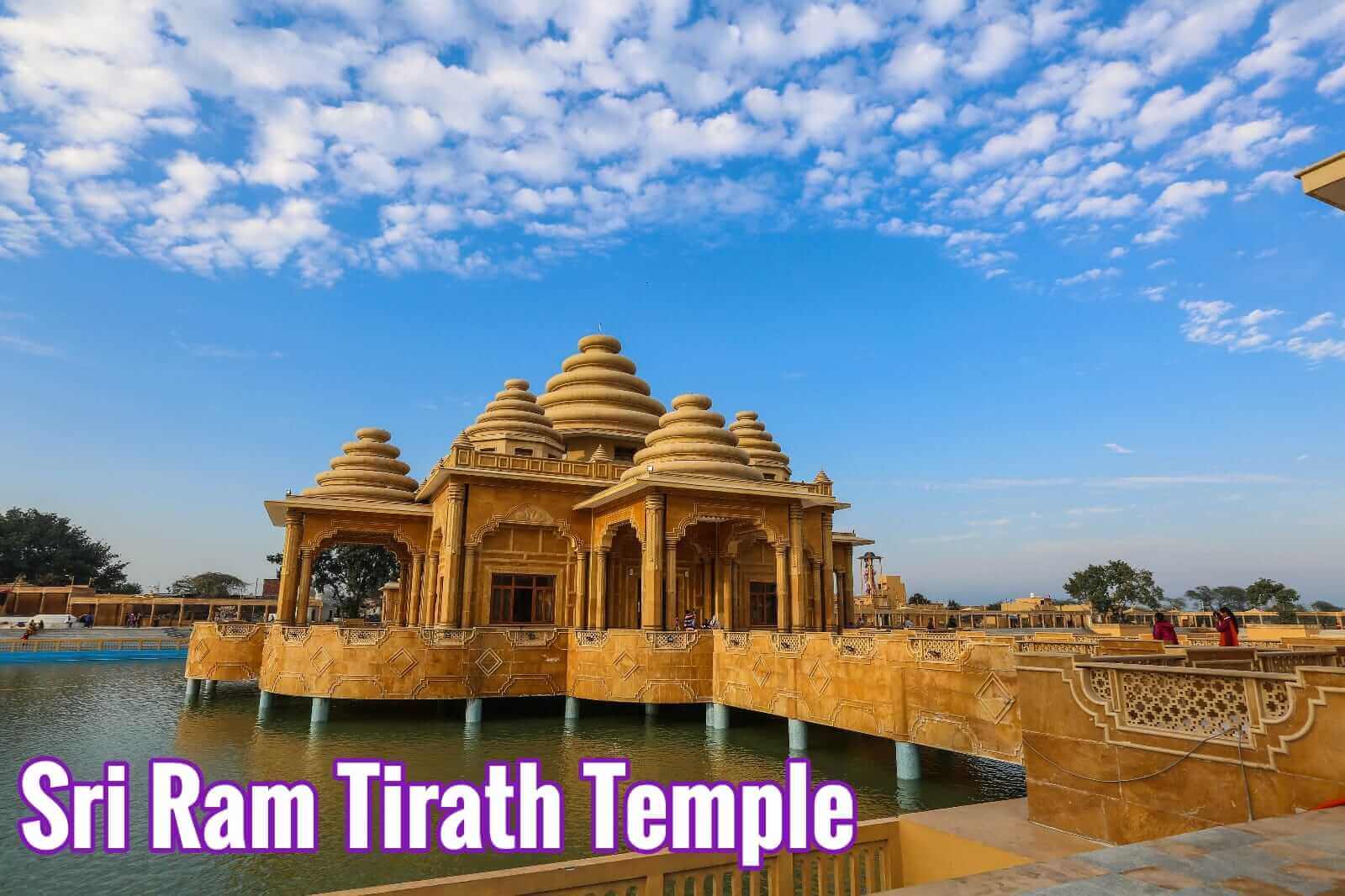 Visiting the Sri Ram Tirath Temple also known as Bhagwan Valmiki Tirath Sthal, located about 12 kilometers west of Amritsar’s city center, is a popular activity. This Hindu temple pays tribute to the birthplace of Lava and Kusha, the twin sons of the Ramayana epic hero, Rama and his wife Sita. The temple’s star attraction is an eight foot tall idol of Valmiki, the Ramayana’s author, plated with approximately 800 kilograms of gold. The complex also includes a sacred water tank, a library housing Sanskrit texts, and an enlightening museum. The best time to visit is around two weeks after Diwali during the temple’s annual five-day festival, which attracts about 100,000 pilgrims. During the festival, pilgrims take ritualistic baths in the water tank and light special lamps handmade from flour and ghee. Legend has it that it was here that the ashram of sage Valmiki once stood, where the sage began writing the Ramayana. While the ashram is no longer there, a grand temple now features an 800 kg gold-plated statue of sage Valmiki.
Visiting the Sri Ram Tirath Temple also known as Bhagwan Valmiki Tirath Sthal, located about 12 kilometers west of Amritsar’s city center, is a popular activity. This Hindu temple pays tribute to the birthplace of Lava and Kusha, the twin sons of the Ramayana epic hero, Rama and his wife Sita. The temple’s star attraction is an eight foot tall idol of Valmiki, the Ramayana’s author, plated with approximately 800 kilograms of gold. The complex also includes a sacred water tank, a library housing Sanskrit texts, and an enlightening museum. The best time to visit is around two weeks after Diwali during the temple’s annual five-day festival, which attracts about 100,000 pilgrims. During the festival, pilgrims take ritualistic baths in the water tank and light special lamps handmade from flour and ghee. Legend has it that it was here that the ashram of sage Valmiki once stood, where the sage began writing the Ramayana. While the ashram is no longer there, a grand temple now features an 800 kg gold-plated statue of sage Valmiki.
10. Hall Bazaar
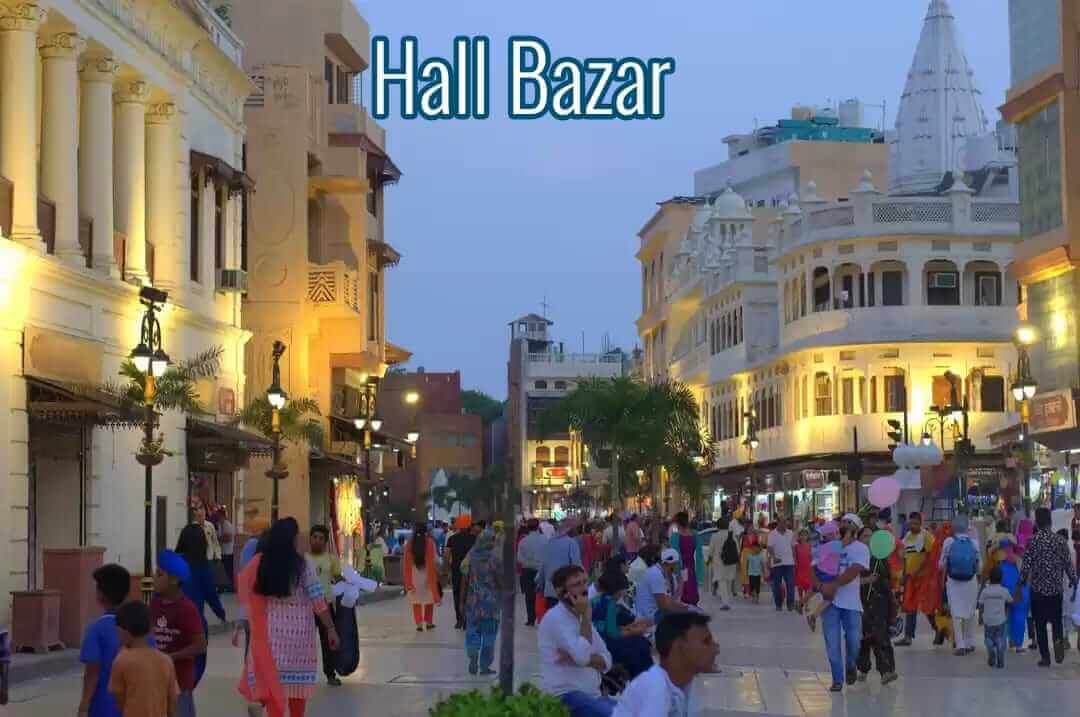 Hall Bazaar in Amritsar, located between the Golden Temple and the Partition Museum, is a shopaholic’s haven and one of the city’s oldest markets. As you step through the Mughal-style Gandhi Gate, you’ll find a bustling marketplace with thousands of shops offering a wide range of products, from jewelry and textiles to tailored suits and electronics, all at affordable prices. While exploring, you can satisfy your taste buds at the food stalls scattered throughout the market. Don’t miss the opportunity to savor Punjabi cuisine in a thali at Bade Bhai ka Brothers Dhaba, enjoy perfectly fried fish at Pehelwan Amritsari Fish Shop, or indulge in delectable curried meats at Bheeri Gali wali Dukan. Hall Bazaar is also renowned for its vibrant jootis (traditional footwear) and offers a sensory delight of colorful sights and sounds. Make sure to pick up some souvenirs to commemorate your trip to Amritsar and savor local delicacies at the historic eateries in the area.
Hall Bazaar in Amritsar, located between the Golden Temple and the Partition Museum, is a shopaholic’s haven and one of the city’s oldest markets. As you step through the Mughal-style Gandhi Gate, you’ll find a bustling marketplace with thousands of shops offering a wide range of products, from jewelry and textiles to tailored suits and electronics, all at affordable prices. While exploring, you can satisfy your taste buds at the food stalls scattered throughout the market. Don’t miss the opportunity to savor Punjabi cuisine in a thali at Bade Bhai ka Brothers Dhaba, enjoy perfectly fried fish at Pehelwan Amritsari Fish Shop, or indulge in delectable curried meats at Bheeri Gali wali Dukan. Hall Bazaar is also renowned for its vibrant jootis (traditional footwear) and offers a sensory delight of colorful sights and sounds. Make sure to pick up some souvenirs to commemorate your trip to Amritsar and savor local delicacies at the historic eateries in the area.
11. Sun City
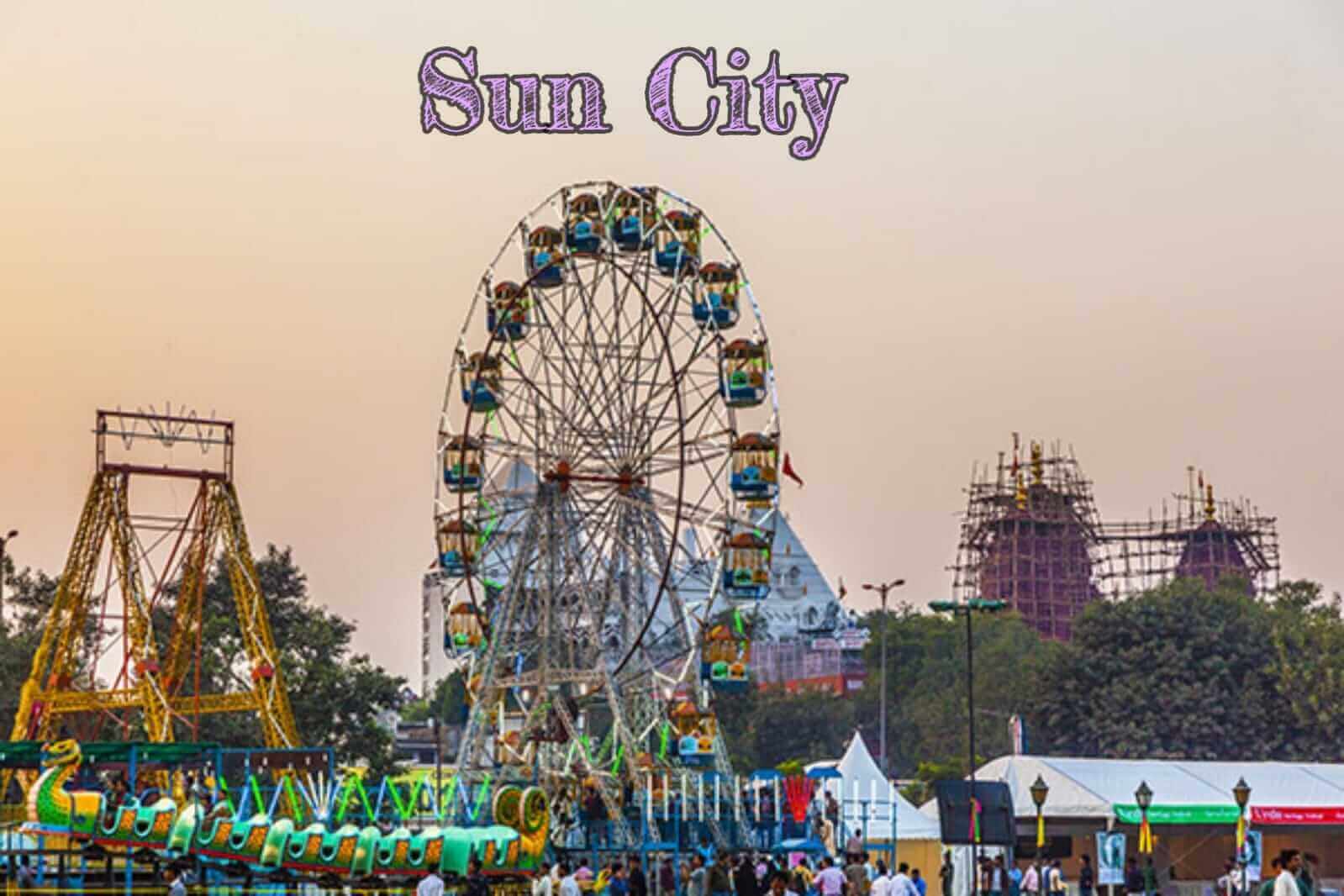 Sun City Water Park, located on Batala Road in Amritsar, is a highly popular water park in the city. This 12-acre park offers a wide array of water rides, regular amusements, aqua dancing, roller coasters, and multiple swimming pools, making it an ideal destination for both adults and children. With approximately 14 entertaining and thrilling rides suitable for all age groups, Sun City Park is one of the most enjoyable places to visit in Amritsar. The park features two main sections, the Theme Park and the Water Park, both brimming with adventure and fun-filled activities.
Sun City Water Park, located on Batala Road in Amritsar, is a highly popular water park in the city. This 12-acre park offers a wide array of water rides, regular amusements, aqua dancing, roller coasters, and multiple swimming pools, making it an ideal destination for both adults and children. With approximately 14 entertaining and thrilling rides suitable for all age groups, Sun City Park is one of the most enjoyable places to visit in Amritsar. The park features two main sections, the Theme Park and the Water Park, both brimming with adventure and fun-filled activities.
Entry Fee: Rs. 350 for Sun City Amusement Park
Rs. 600 for Sun City Water Park
Rs. 700 for Combo ticket (Sun city Amusement Park + Sun City Water Park).
Timings: Monday to Sunday from 10 AM to 8 PM.
Best time to visit: The best time to visit Sun City Park is during the summer season as the climate is hot and one can enjoy a day at leisure by swimming and enjoying the various rides.
12. Amritsar Haveli
The Amritsar Haveli is an ideal restaurant to savor Chinese cuisine in Amritsar. Here, you can enjoy well-prepared dishes like paneer, roti, and naan. Additionally, they serve delicious lassi and coffee. This restaurant is known for its excellent service and friendly staff, always eager to assist you. While some visitors may find the prices moderate, it’s a great place to explore a cozy atmosphere. With a Google rating of 4.2, The Amritsar Haveli is a place to discover Punjab’s rich heritage and culture through its vibrant Punjabi cuisines. It’s a traditional theme village with a fine restaurant offering a unique heritage experience. The ambiance is opulent and showcases traditional Punjabi architecture using Nanak Shahi bricks. The food served here is of exceptional quality and includes starters like Laddoo with Chutney, Papadi Chat, and Dahi Bhalla. The main course offers a variety of options, including the typical Amritsari thali with Maa ki Daal, Channa Daal, papad, Raita curd, homemade achaar, and parantha, along with refreshing chaas. These dishes capture the essence of Amritsar, providing a rich and diverse culinary experience.











